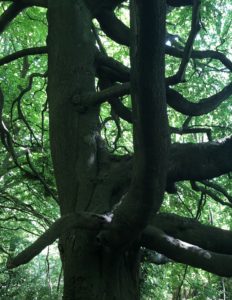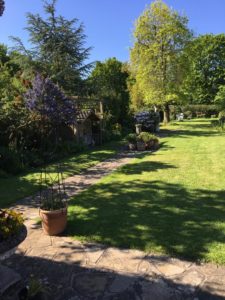M
Dear Integral Meditators,
This weeks article offers a couple of practical thoughts on how to re-frame our idea of being in control in a way that means less stress and more effectiveness. This weeks Wednesday meditation class will be focusing on how to work with these ideas!
In the spirit of participation,
Toby
 Allowing & Participating – Rethinking ‘being in control’
Allowing & Participating – Rethinking ‘being in control’
I’ve recently been experiencing a time in my life where there are so many factors undergoing change that inevitably anxiety keeps coming up. When change occurs, especially deep and radical change, the part of us that wants to feel ´in control’ inevitably feels stressed because the situation feels ´out of control’.
I did a session with a client about the same topic. She was fighting with a similar feeling of trying to be ‘in control’ whilst feeling so many factors ‘out of control’. One of the ways in which we reframed our situation was to use the polarity of ‘accepting and participating’ rather than ‘in control or out of control’.
In control and out of control is a win-lose game; to control is to win, to be out of control is to loose. With allowing and participating:
- We allow things to be uncertain, unfixed, to an extent beyond our control. By accepting we relax more comfortably into the situation we find ourself without unnecessary struggle
- By participating, we look for ways to dance with and influence the situation in creative and constructive ways. Without trying to fix everything at once, we enjoy engaging and participating with our life each day through action that is as intelligent and playful as we are able.
When we practice allowing and participating, we can create a win-win experience: We can relax with things we can’t totally control, while staying active and engaged.
By mindfully combining allowing and participating we can control things better, without feeling the need to be so ‘in control’.
Article content © Toby Ouvry & Integral Meditation Asia 2019.
Upcoming classes and workshops
Ongoing on Wednesday’s, 7.30-8.30pm (Restarts 21st August) – Wednesday Meditation for stress transformation and positive energy with Toby (Bukit Timah)
Ongoing on Tuesday evenings (Restarts 13th August), 7.30-8.30pm – Tuesday Meditation for stress transformation and positive energy with Toby (East Coast)
Tuesday 12.30-1.30 – Integral Meditation classes at Space2B on Stanley Street
Tues 10th & Weds 11th December – Monthly Full Moon Meditation & Manifestation Session
Saturday 14th & 15th December, 2-5.30pm – The Mindful Heart Meditation Workshop
Tuesday and Wednesday 17,18 December – Winter solstice balancing & renewing meditation
Integral Meditation Asia
Online Courses * 1:1 Coaching * Books * Live Workshops * Corporate Mindfulness Training *Life-Coaching * Meditation Technology









